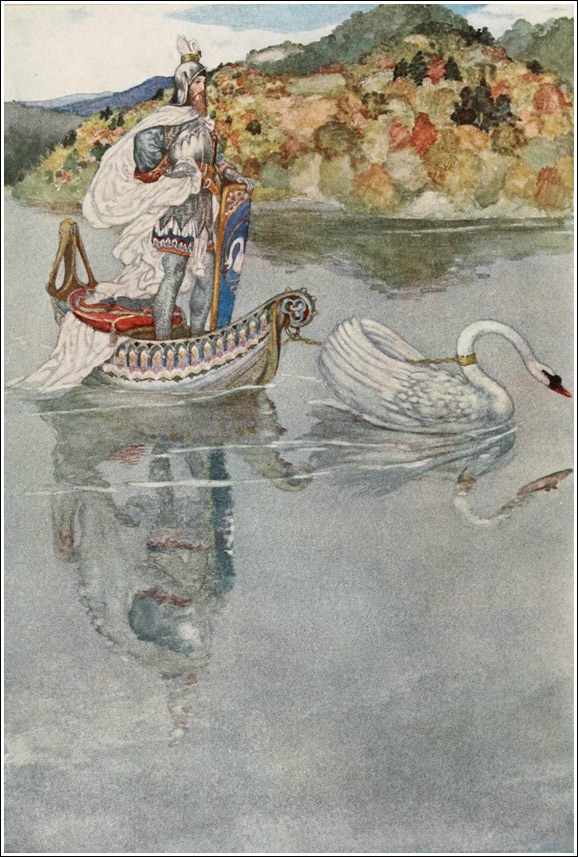Loherangrin, Lorengel, Swan-Knight
The Swan-Knight, who is one of the champions of virtue who in German versions of the tale is son of Parsifal and Condwiramurs, twin brother of Kardeiz, and heir to the Grail kingship. He is one of the knights at the Round Table. He is the one from the circle of knights who had been sent for the Holy Grail.
Lohengrin’s story is told by Wolfram von Eschenbach in Parzival, and the unknown author of the later Lohengrin.
Elsa’s father had before he died given her and the country to Frederick de Telramund, but Elsa did not want him and were steadfast and said she had not promised him her hand. Telramund appealed to Emperor Henrik Bird-Catcher and meant she was guilty of breach of faith. The emperor called for a single combat and the one who spoke for Elsa would meet Telramund. But he was known to be a mighty champion and no knight voluntered.

Then there came a boat drawn by an angel, disguised as a swan, and in it a brave knight. He challenged Telramund and the fight were so hard that the rivets flew out from the armoury. The swan-knight won and when the talk of marriage came up Elsa had to promise that she would never ask for his name nor origin. The wedding happened and the maiden were
given to the bed, in which she had to endure the tournament-fights of love.
After a few years, when Elsa had given birth to two sons, she were lead to ask her husband the banned question by a jealous lady. Before the king and the gathered court the knight told his name was Lohengrin, son of Parsifal, and he had been sent from the castle of the Grail to help Elsa. Now when she had broken her promise he had to return there. The swan got him and every time Elsa heard Lohengrin’s name she fainted, according to Wolfram von Eschenbach.
Lohengrin subsequently married Princess Belaye of Lizaborye, but he was murdered by armed men sent by her parents who thought he had enchanted her. Belaye died of grief. The country’s name was changed to Lothringen (Lorraine) in his honour. Lohengrin’s adventures also appears in Rigomer, a later, anonymous poem.
In the German Lorengel, the taboo question does not exist and Lohengrin therefore does not leave Elsa.
In Wagner’s opera Lohengrin Telramund does not demand Elsa’s hand. He is already married to the witch Ortrud. To get a hold of Brabant he accuses Elsa of murdering his youngest brother Gottfried instead. In the closing scene it shows that the swan that had been pulling Lohengrin and his boat is Gottfried, who had been transformed by Ortrud.
Wolfram may have adopted his name from Loherenc Garin, or “Garin of Lorraine,” a popular character in a French chanson de geste.
Sources
Parzival | Wolfram von Eschenbach, 1200–1210
Lohengrin | c. 1283-1289
Lorengel | 15th century
Image credit
Lohengrin, Knight of the Swan | Artist: Willy Pogany
